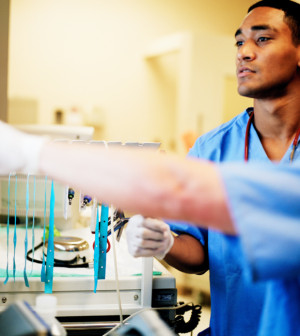- Navigating Your Midlife Crisis: Embracing New Possibilities
- City Raccoons Showing Signs of Domestication
- Mapping the Exposome: Science Broadens Focus to Environmental Disease Triggers
- One Week Less on Social Media Linked to Better Mental Health
- Your Brain Changes in Stages as You Age, Study Finds
- Some Suicide Victims Show No Typical Warning Signs, Study Finds
- ByHeart Formula Faces Lawsuits After Babies Sickened With Botulism
- Switch to Vegan Diet Could Cut Your Greenhouse Gas Emissions in Half
- Regular Bedtime Does Wonders for Blood Pressure
- Dining Alone Could Mean Worse Nutrition for Seniors
Health Highlights: Dec. 15, 2016

Here are some of the latest health and medical news developments, compiled by the editors of HealthDay:
Health Insurance Subsidies Cost Rises to Nearly $10 Billion
The cost to U.S. taxpayers of health insurance premium subsidies under the Affordable Care Act will rise by $9.8 billion to $42.6 billion next year, from $32.8 billion currently, according to a Center for Health and Economy study.
It said the average monthly subsidy will increase $76 (26 percent), from $291 to $367, the Associated Press reported.
The higher subsidy is meant to reduce the impact of double-digit premium hikes.
More than 8 in 10 consumers who purchase private health insurance through HealthCare.gov and state markets receive tax credits from the government to help pay their premiums, the AP reported.
Republicans plan to repeal the Affordable Care Act and replace it with an alternative, but have provided no details.
—–
Babies Conceived With DNA from 3 People Approved by U.K. Regulator
The U.K.’s fertility regulator has given the go-ahead for doctors to create babies using DNA from two women and one man.
The technique is meant to prevent children from inheriting deadly genetic diseases from their mother. Doctors in Newcastle who developed this type of IVF are expected to be the first to offer the procedure and have already asked for donor eggs, BBC News reported.
This approach uses a donor egg along with the mother’s egg and father’s sperm. The resulting child has a small amount of DNA from the donor.
At the earliest, the first child created using this technique could born by the end of 2017, BBC News reported.
“It is a decision of historic importance,” Sally Cheshire, chairwoman of the Human Fertilization and Embryology Authority, said.
“This is about cautious go ahead, not gung-ho go ahead, and there is a long way to go,” she added, BBC News reported.
Copyright © 2025 HealthDay. All rights reserved.










